Technician Tales: Common Clarinet Faults How to Avoid Them
21st October 2025Every clarinet player, from beginner to professional, relies on their instrument’s precision. Yet many of the repair issues technicians see are entirely preventable – small habits that, over time, lead to avoidable faults.
Below are some of the most common clarinet faults our repairers encounter, along with guidance on how to avoid them. A little awareness during daily handling can save you a trip to the workshop (and your clarinet a lot of stress).
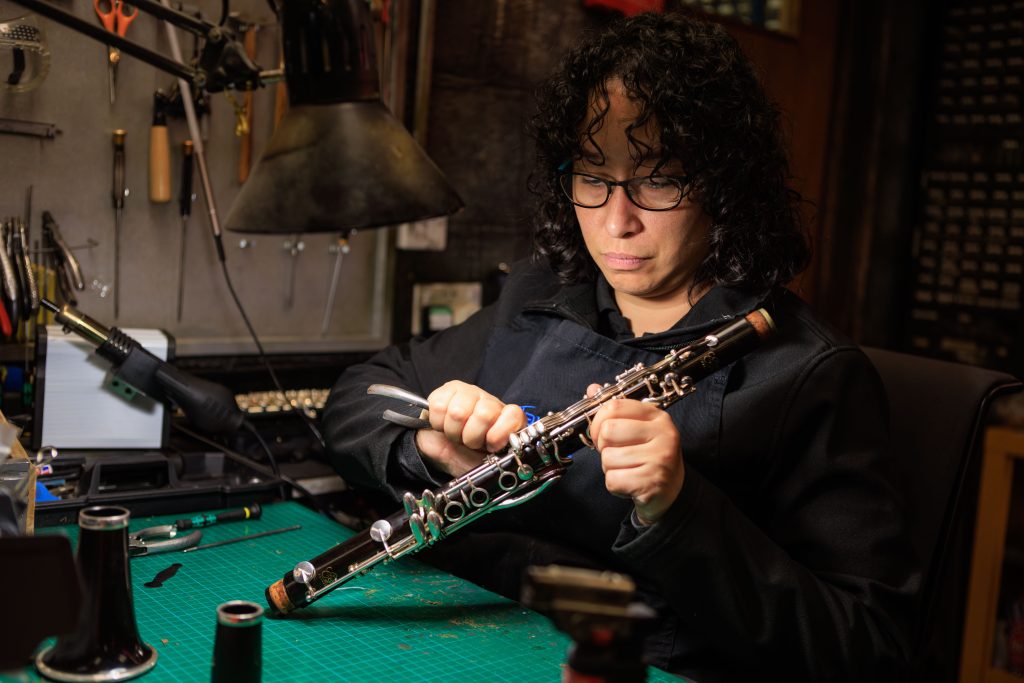
1. Bent Crow’s Foot
This issue often appears when pressure is applied to the F/C touchpiece, lowering the angle of the ‘crows foot’ itself with a bend. The ‘crows foot’ is what we call the little plate that stems down from the F/C touchpiece, resting underneath the C#/F# and B/E touchpieces. Even the slightest bend can throw the mechanism out of alignment, preventing notes from speaking clearly.
The problem most often occurs during assembly, when the clarinet is twisted together without careful hand placement. To avoid this, hold the lower joint slightly lower — between the C/F and B/E cups — where there are no interacting levers, only hinge tubing. Squeezing or general force should not be necessary, these joints should twist together nicely with cork grease applied to the tenon corks.
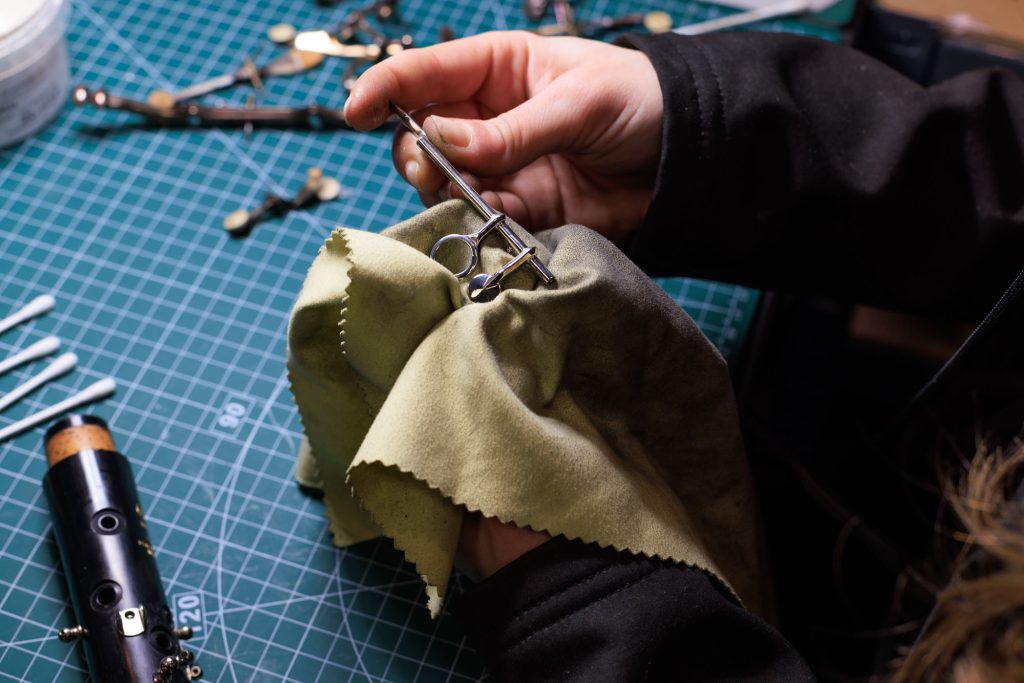
2. Bent Bridge Key or Broken Bridge Key Cork
When assembling the clarinet, you should be mindful of the bridge key, also known as the long Bb link. This is the only key that interacts between the top and bottom joint, and it has a very important job. The cork on the upper key is essential for accurate regulation. If this area is misaligned or bent during assembly, the mechanism will no longer function correctly, leading to intonation and response issues.
When assembling, gently hold down the upper joint’s ring key so that the bridge key can glide over the lower joint’s keywork without clashing. Once both joints are aligned, the mechanism will meet perfectly, ensuring smooth connection between upper and lower sections.
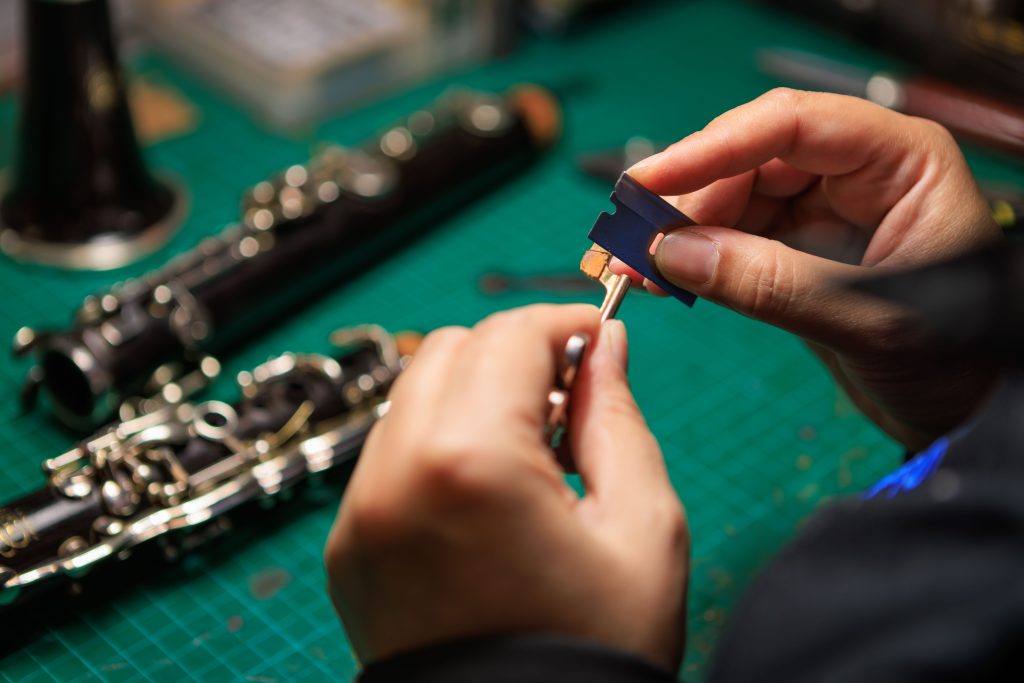
3. Broken Lever Pin
On most modern clarinets, the left-hand pinky levers connect via small nylon pins. These transfer motion to the padded keywork, allowing smooth and quiet action. Older clarinets used metal pins or sliding surfaces, which were strong but needed cushioning material like cork or pad skin. Nylon is quieter against metal and doesn’t corrode or need lubrication.
However, these pins can be a weak point. If too much pressure is applied, they break before the surrounding metal bends. When this happens, levers may hang loosely. Luckily, replacing these pins is a quick fix that our workshop can do while you wait.
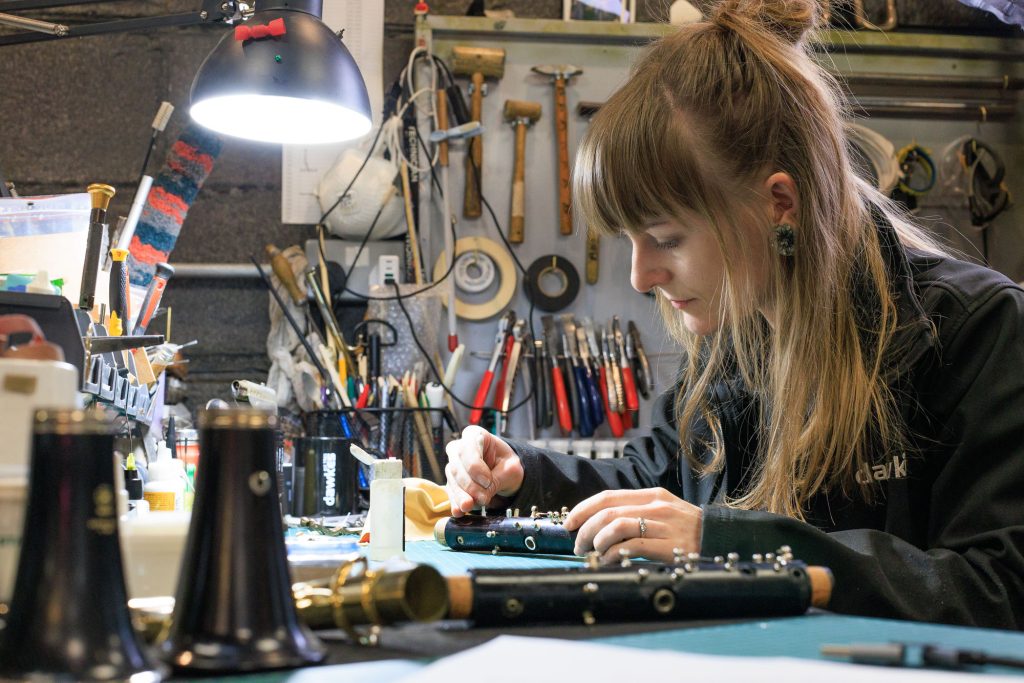
4. Damaged Pads
Clarinet pads are traditionally made from a disk of card, then a disk of felt, wrapped in ‘skin’ – this skin is either a fishes swim bladder, sheeps bladder, or ‘goldbeater’ which is ox intestine, a very fine but strong material used for applying gold leaf. Deluxe quality pads will have a double layer of skin making them more durable, but ultimately the exterior material will eventually wear through, exposing felt which is not known for its airtight qualities!
Unlucky Clarinets can also fall victim of the dreaded ‘pad mites’ which an industry term for ‘dust mites’ or ‘carpet mites’ – these little guys just love the felt layer and will happily make themselves at home in your case, devouring their way through all your pads until your instrument is unplayable. Even though leather and synthetic pads are indeed more durable, they will still deteriorate with the heat and moisture from regular playing.
Regular check-ups by a repairer can identify wear before leaks occur. Replacing or reseating pads is a relatively minor job when caught early.
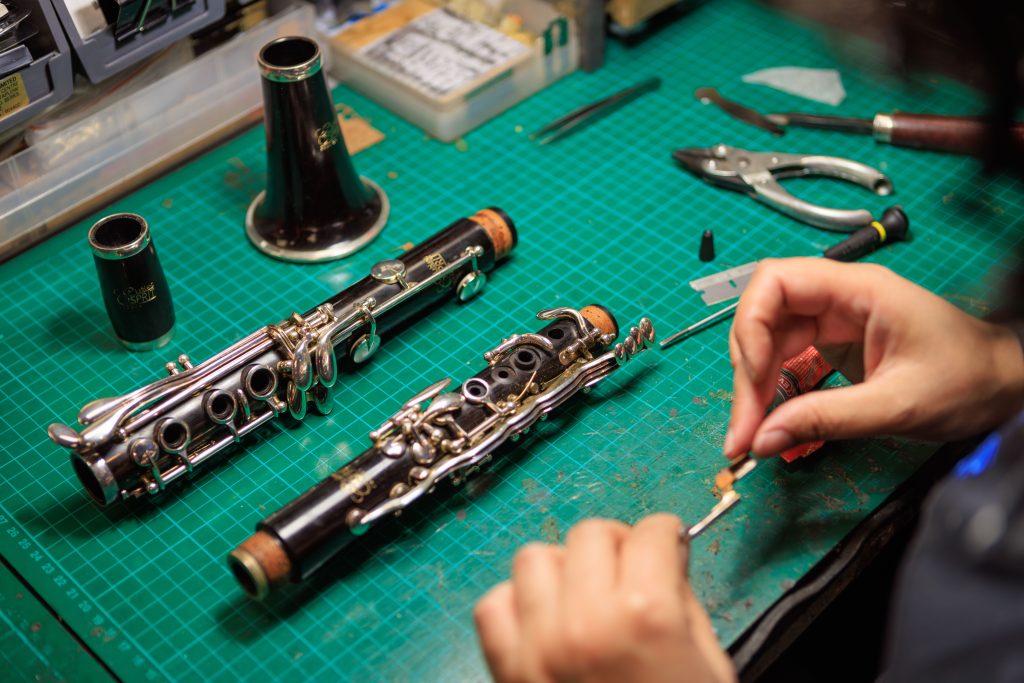
5. Dirty or Clogged Tone Holes
Tone holes, especially on the upper joint, are small – often just 5–6mm wide. Over time, condensation, saliva, and bacteria build up inside the bore and around tone hole edges. Even diligent cleaning with a swab can leave lint that clings to these areas.
We often see upper tone holes (around the throat notes) partly blocked by dried buildup, which affects intonation. Regular servicing prevents this and lets technicians clean hidden areas beneath the keywork.
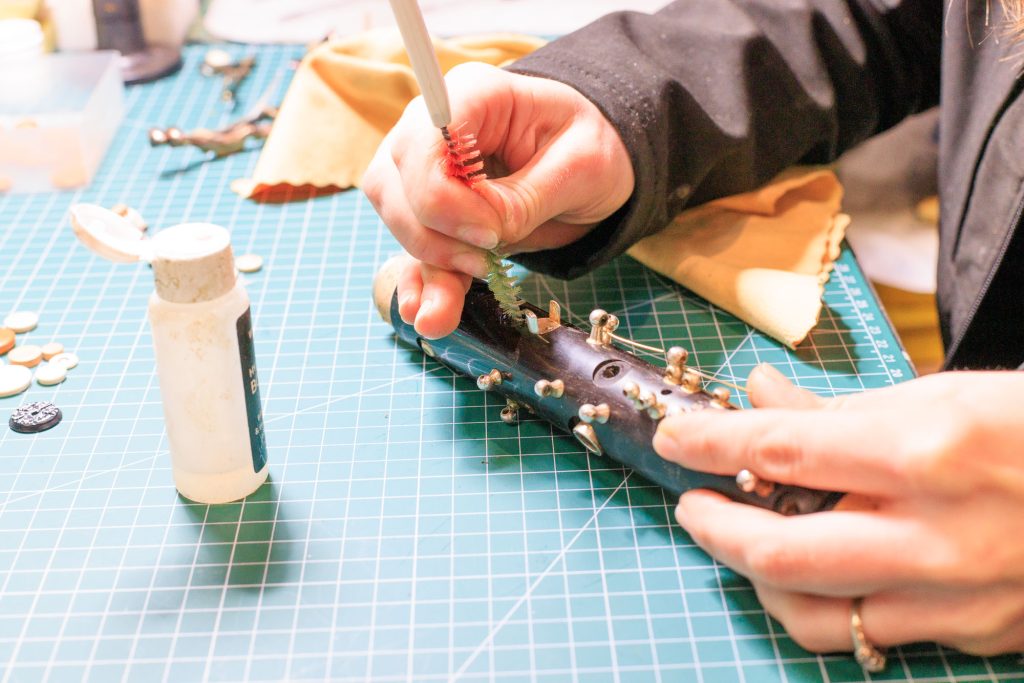
6. Sticking Tenons
Wooden clarinets can have unique issues when it comes to assembly. The ‘shoulder’ of body material that sits either side of the cork tenons, is very precisely machined to be close fitting inside the receiving socket. When humidity rises, the wood swells – much like a door frame on a hot day – and the joint can become difficult or impossible to assemble.
We use precision tools daily to remove just enough wood to restore the perfect fit. This may need repeating during your clarinet’s first year, especially through seasonal humidity changes.
We only ever do this work in response, never in advance of the problem, and we never take more material than absolutely necessary away. You cannot put it back once it’s gone. Less is more in order to ensure resonance across the joints.
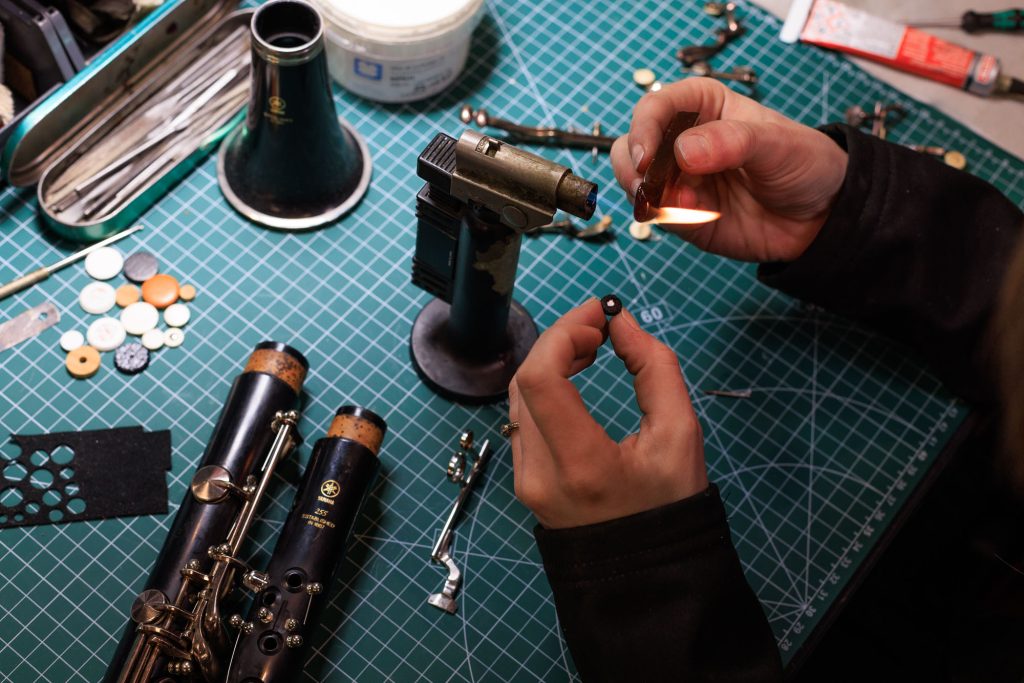
Final Thoughts
Most of these faults stem from routine handling rather than neglect or misuse. By assembling your clarinet carefully, keeping it clean, and scheduling regular maintenance, you’ll extend its life and performance.
As every technician will tell you – prevention is far quicker, cheaper, and kinder to your instrument than repair.
